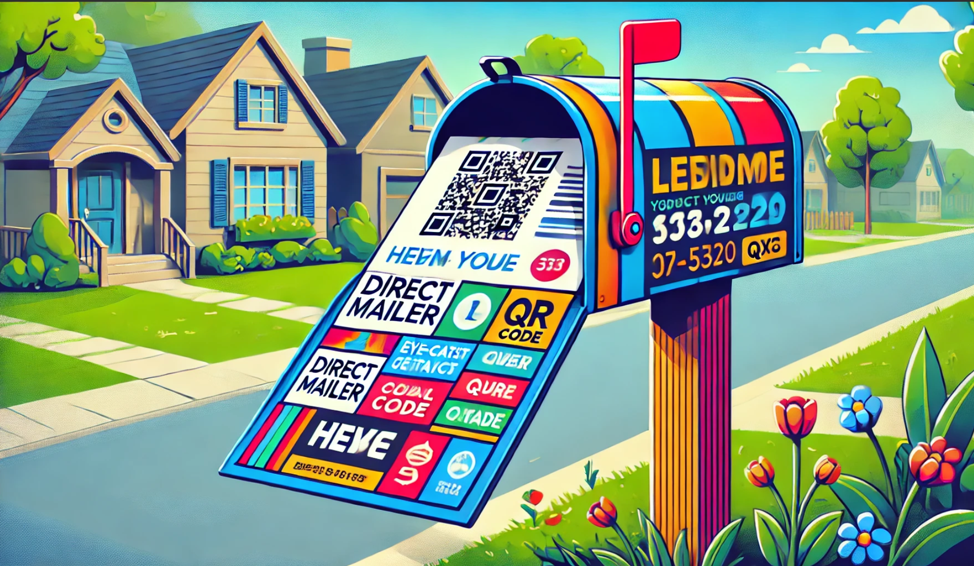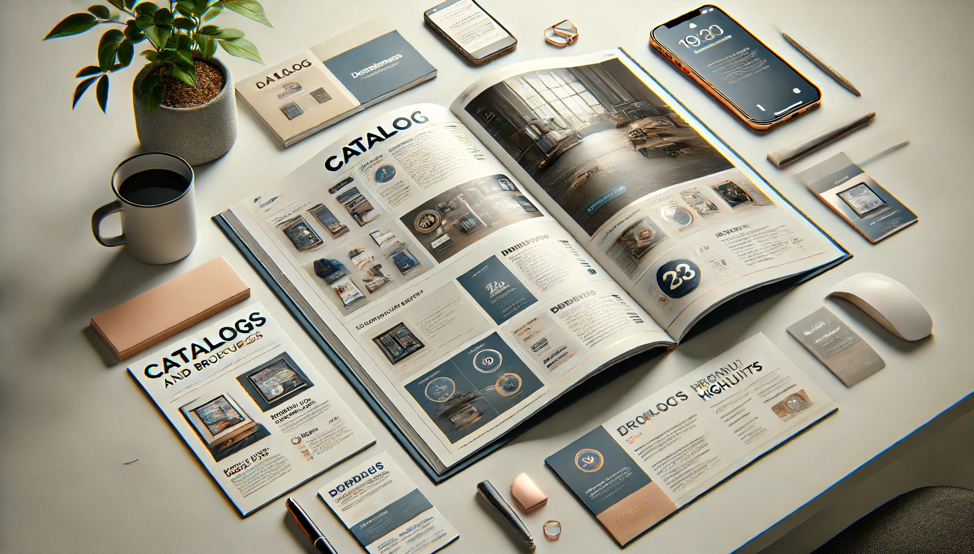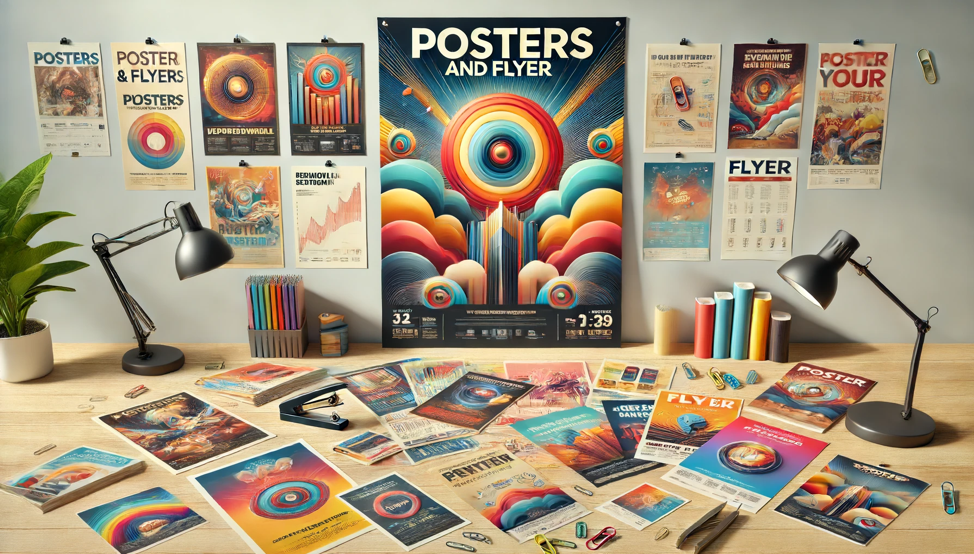In a world saturated with screens and fleeting digital interactions, there’s a unique magic in holding a beautifully crafted piece of print. The allure of a brochure that tells a story with every fold or a poster that captivates from a distance is something that just cannot be captivated by a screen. With its tactile charm, print media doesn’t just capture attention; it creates a lasting bond that digital often misses.
Print media allows brands to craft a story with a beginning, middle, and end that users can touch, feel, and keep. It’s not just about the visual appeal; it’s about creating an experience that stays with your audience.
Crafting Your Brand Narrative with Print
Every brand has a story, and how you tell that story can set you apart. Here’s how you can use print media to enhance your brand narrative effectively:
1. Define Your Message
Before diving into design, clarify what you want to communicate. What’s the core message? What emotions do you want to evoke? Whether you’re introducing a new product, sharing a company milestone, or promoting a service, your message should be clear and consistent across all print materials.
2. Choose the Right Medium
Print media encompasses a range of formats—brochures, flyers, posters, business cards, and more. Choose the medium that best fits your message and audience. For instance, a high-quality brochure is perfect for detailed product information, while a poster might be better for event promotion.
3. Engage with Quality Design
Design plays a crucial role in storytelling. Use visuals that resonate with your brand and audience. High-resolution images, thoughtful color schemes, and consistent typography can make your print materials stand out. Ensure that your design is not only aesthetically pleasing but also functional and easy to read.
Utilizing Print Media to Build Connection
Print media can forge stronger connections by engaging multiple senses and creating memorable experiences. Here’s how to make the most of it:
1. Use High-Quality Materials
Investing in quality paper and finishes can make a significant difference. It’s not just about the look but the feel of your print media. Matte, glossy, or textured finishes can add depth and interest, making your materials more engaging and memorable.
2. Tell a Story Through Imagery
Images can communicate emotions and messages instantly. Use photography and illustrations that align with your brand’s voice and message. Show your products in real-life scenarios or use illustrations to explain complex concepts simply.
3. Incorporate Interactive Elements
Print media isn’t limited to static images and text. You can integrate interactive elements like QR codes that link to videos or websites, or augmented reality (AR) features that bring your print materials to life. These elements can bridge the gap between print and digital, offering a richer experience.
Examples of Effective Print Media
Let’s explore a few examples of how brands use print media to tell their stories:
1. Catalogs and Brochures
These are classic print media forms that provide a detailed look at your products or services. A well-designed catalog can guide your audience through your offerings, while a brochure can provide a snapshot of your brand’s highlights. Make sure to include high-quality images, clear descriptions, and contact information.
2. Posters and Flyers
Perfect for grabbing attention, posters and flyers can promote events, sales, or new product launches. Use bold colors, striking images, and concise text to create impact and ensure your message is easily understood at a glance.
 3. Direct Mailers
3. Direct Mailers
Direct mailers offer a personal touch, delivering your message directly to your audience’s mailbox. They are ideal for promotions, invitations, or updates. Design them to be visually appealing and straightforward, with eye-catching graphics and clear calls-to-action. Personalizing content for specific demographics can boost engagement. Ensure they are easy to read at a glance, with prominent contact details and trackable elements like QR codes for measuring effectiveness.
The Role of Commercial Printing Services
Partnering with a reputable commercial printing company can enhance the quality of your print materials. Here’s what to look for:
1. Quality and Range of Services
A good commercial printing company offers a range of services—from digital to offset printing—and high-quality outputs. They should be able to handle different paper types, finishes, and custom printing options.
2. Expertise and Experience
Experience matters. Look for a company with a track record of producing high-quality print materials. Their expertise can guide you through the process, ensuring that your vision is realized effectively.
3. Customer Service
Communication is key. A responsive commercial printing company will keep you informed throughout the process, from initial design to final delivery. They should be willing to work with you to meet deadlines and address any concerns.
Incorporating Print Media into Your Marketing Strategy
Integrating print media into your broader marketing strategy can enhance your brand’s reach and impact. Here’s how to do it:
1. Coordinate with Digital Campaigns
Print media can complement your digital campaigns. Use print materials to drive traffic to your website or social media channels. Include QR codes or unique URLs to track engagement and measure effectiveness.
2. Personalize Your Approach
Personalization can make your print materials more impactful. Consider personalized mailers or brochures tailored to specific segments of your audience. Use data from your CRM to target different customer needs and preferences.
3. Track and Measure Results
Track the performance of your print media efforts. Use unique codes, coupons, or landing pages to monitor response rates and conversions. Analyzing these metrics can help you refine your print strategy and improve future campaigns.
Sustainability in Print Media
In today’s environmentally conscious world, sustainability is crucial. Here’s how you can make your print media efforts more eco-friendly:
1. Use Recycled Materials
Opt for recycled paper and eco-friendly inks. Many commercial printing services offer sustainable options that don’t compromise quality.
2. Choose Certified Printers
Look for printers certified by environmental organizations. Certifications like FSC (Forest Stewardship Council) indicate that the paper is sourced from responsibly managed forests.
3. Minimize Waste
Print only what you need and consider digital proofs to reduce waste. Efficient printing processes and accurate planning can help minimize excess.
The Future of Print Media in Branding
While digital marketing continues to grow, print media remains a valuable asset for brands. It offers a unique way to connect with audiences, convey your message, and enhance your brand narrative. By integrating print with digital strategies, investing in quality design and materials, and considering sustainability, you can create effective, memorable print media that resonates with your audience.
Wrapping It Up: Bringing Your Brand’s Story to Life in Print
Visual storytelling through print media is a powerful way to enhance your brand narrative. Whether it’s a beautifully designed brochure, an eye-catching poster, or a simple yet elegant business card, print media can leave a lasting impression and complement your digital efforts. Working with a reputable commercial printing company ensures high-quality materials that reflect your brand’s identity and message.
By carefully crafting your message, choosing the right medium, and using engaging designs, you can create print materials that captivate your audience and tell your brand’s story in a tangible, impactful way. Embrace the power of print to build deeper connections and bring your brand narrative to life.
FAQs
- Why is print media still relevant in the digital age? Print media offers a tactile and personal experience that digital media often can’t replicate. It creates lasting impressions and can complement digital strategies effectively.
- How can I integrate print media with my digital marketing efforts? Use print to drive traffic to digital platforms by including QR codes, URLs, or social media handles. Coordinate campaigns across both mediums for a cohesive strategy.
- What should I look for in a commercial printing company? Consider their range of services, quality of outputs, expertise, and customer service. Look for companies that offer sustainable printing options if environmental concerns are important to you.
- How can I make my print media more engaging? Focus on high-quality design, use interactive elements like QR codes, and choose the right materials to enhance the tactile experience.
- What are some eco-friendly practices in print media? Use recycled materials, opt for certified printers, and minimize waste by printing efficiently and only what you need.
By taking advantage these insights, you can effectively utilize print media to enhance your brand’s storytelling and make a lasting impact on your audience.









